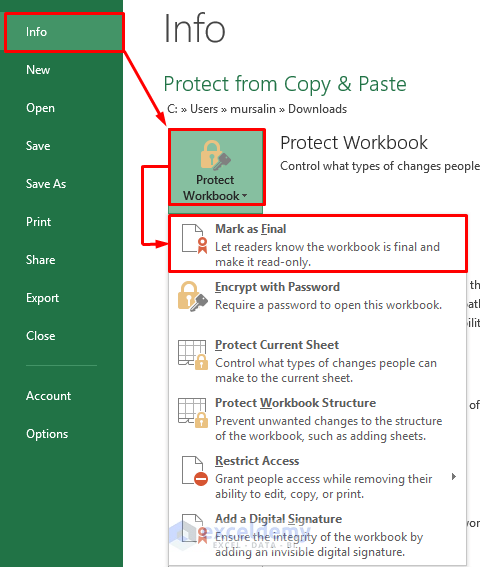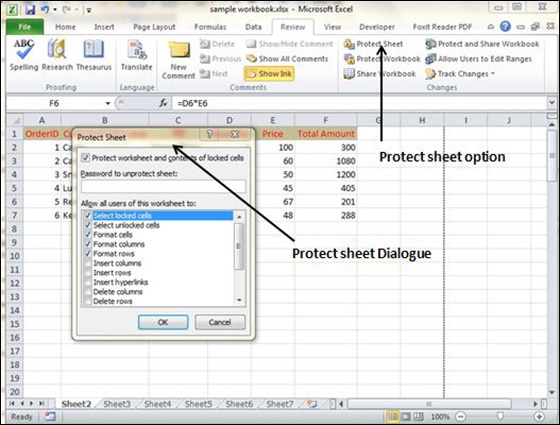5 Ways to Copy Protected Excel Sheets

Excel spreadsheets often contain sensitive or critical data that require protection. Whether you're a business safeguarding financial projections or an individual protecting personal budgets, knowing how to copy protected Excel sheets is essential. In this comprehensive guide, we'll explore five methods to circumvent protection and access data from locked Excel sheets effectively.
1. Changing File Extension

This method leverages the fact that different file extensions in Microsoft Office can bypass certain security features:
- Open the file explorer and locate your protected Excel file.
- Right-click the file, choose Rename, and change the file extension from “.xlsx” to “.zip”.
- When prompted about changing the file extension, click Yes.
- Unzip the file using any archiving software (like WinRAR).
- Open the “xl” folder and then the “worksheets” folder within.
- Find the XML file representing the protected sheet, open it with a text editor, and locate the tag
- Re-zip all the files, rename the file back to “.xlsx”, and you can now open and edit the sheet without restrictions.
2. Using VBA Scripts

VBA (Visual Basic for Applications) scripting provides an automated way to remove protection from Excel sheets:
- Open Excel, press Alt + F11 to open the VBA editor.
- Insert a new module (Insert > Module).
- Paste the following VBA code into the module:
Sub PasswordBreaker()
Dim i As Integer, j As Integer, k As Integer
Dim l As Integer, m As Integer, n As Integer
Dim i1 As Integer, i2 As Integer, i3 As Integer
Dim i4 As Integer, i5 As Integer, i6 As Integer
On Error Resume Next
For i = 65 To 66: For j = 65 To 66: For k = 65 To 66
For l = 65 To 66: For m = 65 To 66: For i1 = 65 To 66
For i2 = 65 To 66: For i3 = 65 To 66: For i4 = 65 To 66
For i5 = 65 To 66: For i6 = 65 To 66: For n = 32 To 126
ActiveSheet.Unprotect Chr(i) & Chr(j) & Chr(k) & _
Chr(l) & Chr(m) & Chr(i1) & Chr(i2) & Chr(i3) & _
Chr(i4) & Chr(i5) & Chr(i6) & Chr(n)
If ActiveSheet.ProtectContents = False Then
MsgBox “Password is ” & Chr(i) & Chr(j) & Chr(k) & _
Chr(l) & Chr(m) & Chr(i1) & Chr(i2) & Chr(i3) & _
Chr(i4) & Chr(i5) & Chr(i6) & Chr(n)
Exit Sub
End If
Next: Next: Next: Next: Next: Next
Next: Next: Next: Next: Next: Next
End Sub
3. Excel Password Recovery Software

Specialized software can recover or remove protection passwords from Excel files:
- Download and install a reputable Excel password recovery tool like PassFab for Excel or Excel Password Recovery Lastic.
- Open the software and follow its instructions to load your protected Excel file.
- Use features like brute force attacks or dictionary attacks to recover or remove the password.
- Once the password is found or removed, you can open the file in Excel.
4. Using External Tools like 7-Zip

External tools can manipulate Excel files in ways that native applications cannot:
- Right-click on your Excel file and open it with 7-Zip or similar software.
- Navigate to the ‘xl’ folder, then ‘worksheets’, and find the XML file for the sheet you want to unprotect.
- Edit this file to remove or change the protection settings, then re-zip and rename the file.
5. Online Unprotect Services

There are online tools that can unprotect Excel sheets:
- Upload your protected Excel file to an online service like Online-Convert or SmallPDF.
- Select the unprotect option or follow the service’s steps for unprotected file conversion.
- Download the file once the service has completed the process.
💡 Note: Using these methods to copy protected sheets is only ethical if you have permission from the file owner or if you own the file yourself. Always respect data privacy and intellectual property rights.
To conclude, mastering the methods to copy or unprotect Excel sheets can be beneficial for data recovery, auditing, or managing legacy data. However, always ensure your actions are within legal and ethical boundaries. Whether you choose to alter file extensions, employ VBA scripts, use recovery software, leverage external tools, or opt for online services, be aware of the implications of your actions. Keep in mind the balance between convenience and integrity when dealing with protected data.
Is it legal to unprotect Excel sheets?

+
It is legal if you have the permission of the file owner or are the owner yourself. Unauthorized access or modification of data is illegal and unethical.
Will Microsoft Excel prompt any warning when modifying file extensions?

+
Yes, changing file extensions might result in a warning from Windows or Excel, but you can confirm the action and proceed.
What if I need to keep the original file protected?

+
Create a backup of the original file before attempting to unprotect or copy the sheet to ensure you retain an unaltered version.
Can these methods fail?

+
Yes, especially for complex password protection or newer Excel versions with enhanced security features. Advanced recovery tools might be required in such cases.